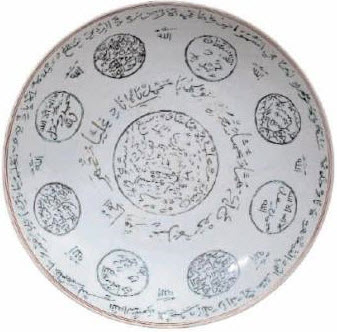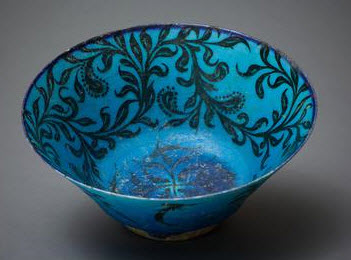The term ‘Islamic art’ does not refer to a specific style, but rather describes the art created specifically in the service of the faith such as the mosque and its furnishings produced in the lands ruled by Muslims, for Muslim and non-Muslim patrons, or created by Muslim artists. Furthermore, all artistic and intellectual activities were governed by principles of the faith and not confined to any specific activity, but rather embraced the whole of life. Hence, Islamic art is based on the principle of Diving Origin, and is therefore “integrated into the very rhythm of daily existence and not confined to the segregated space of museums or rare moments of the annual calendar” (Nasr, Religious Art, Traditional Art, Sacred Art p 175). Thus, cooking pots, utensils, woven fabrics, mosque and palace walls incorporated reminders of the principles of faith, binding the user or beholder to become aware of the Divine.


In the history of things, gardens come first and last: the Garden of Eden at the beginning of Creation and the Garden of Paradise at the end of time for those who have done good works.
Much of the Qur’an is concerned with humans leading a righteous life in order to prepare for the Day of Judgement, when they will enter Heaven or Hell. Heaven is described in the Qur’an as jannat, a word also translated as garden. Thus, the connection between Paradise and cool, green gardens with running water and fruit trees runs through the entire history of Islam. “Gardens in the Islamic world, with fruit trees and shade trees, roses and watercourses, are often equated with Paradise” (Spirit & Life Catalogue p 22).
Royal patrons created historically important pleasure gardens in many parts of the Islamic world. In his Kitab al-majalis wa’l-musayarat (Book of Homiletic Sessions and Accomplishments on Journeys), the jurist-scholar Qadi al-Numan reports on the Fatimid Caliph-Imam as a great constructor of gardens, irrigation works, canals, and reservoirs.
The monumental pavilions in Islamic architecture often looked out upon a flat open space, known as a maydan, that included waterworks and paths. In some instances gardens created backdrops for architectural monuments such as the mausoleum of Emperor Humayun in Delhi, India. Often, there was a vibrant interaction between the designers of the gardens owing to trade across vast territories and the mobility of the craftsmen.

‘Water is an important symbol in Islam and gardens with axial pools filled with fish were seen as metaphors for the heavenly garden’ (Spirit & Life Catalogue p 76).

“Water, after all, has been seen, down through the ages, as the great source of life. When scientists search the universe for signs of life, they begin by looking for water. Water restores and renews and refreshes.”
Mawlana Hazar Imam
Ottawa, Canada, May 16, 2017
Speech
Sources:
James L. Westcoat Jr. “Gardens, pavilions and tents: The arts of shelter,” Architecture in Islamic Arts: Treasures of the Aga Khan Museum, published by Aga Khan Trust for Culture
Seyyed Hossein Nasr, Religious Art, Traditional Art, Sacred Art, World Wisdom Online Library
Spirit & Life Catalogue, Masterpieces of Islamic Art from the Aga Khan Museum Collection, published by Aga Khan Trust for Culture
